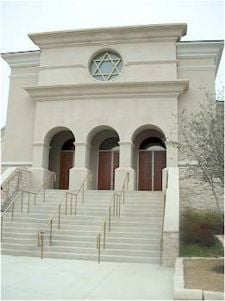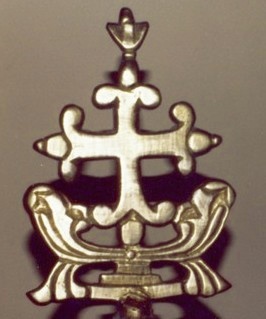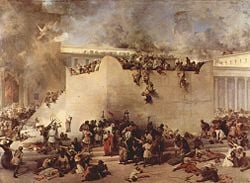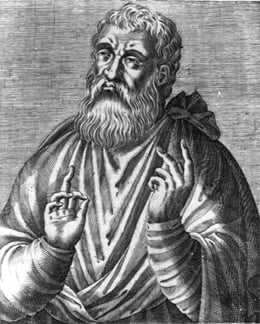Jewish Christians

Jewish Christians (sometimes called also Hebrew Christians or Christian Jews) is a term which can have two meanings. The first describes the members of the early Christian movement, who were Jews that accepted Jesus of Nazareth as the Messiah but continued to live as Jews. The second refers to a Jewish movement within contemporary Christianity.
Jewish Christians predominated in the movement of early Christianity, until the success of Saint Paul's mission to the Gentiles. They also sent missionaries to the Gentiles (2 Cor. 11:22), leading to tensions with Paul, who called them "Judaizers" because they expected Gentile converts to abide by the Jewish Law. Jewish Christians bore the brunt of persecution from their fellow Jews, who rejected Jesus' messiahship. The defeat of the Jewish revolt of 70 C.E. spelled an end to the central role of the Jerusalem church in the Christian movement and ensured the ascendancy of Gentile Christianity.
The Gospel of Matthew is for the most part an expression of Jewish-Christian theology. As Jews who believed in Jesus' promise of the Kingdom of God, they expected the imminent return of the Son of man in glory (Matt. 24:30, 26:64) to vindicate the believers and defeat the Romans. In this they stayed close to the Jewish expectation of a royal Messiah who will rule on earth as the son of David. The continued delay of the parousia (return of Christ) was another cause of their decline.
After this, Christian theology, as well as church tradition, took on an increasingly Hellenistic quality, rejecting Jewish law and promulgating doctrines such as Christ's death on the cross as atonement for sin, Jesus as the Son of God, and the Trinity, which were deeply offensive to Jews. In time, Christianity took on a distinctly anti-Jewish character, and Jewish Christians were treated as heretics if they continued to observe Jewish traditions. By the sixth century, Jewish Christianity had been virtually destroyed except in small pockets, although some groups with semi-Jewish Christian roots still survive.
The contemporary movement of Jewish Christians includes both observant and non-observant Jews who otherwise accept traditional Christian teachings about Jesus. They are treated with suspicion by mainstream Jews and are usually considered no longer truly Jewish.
Jewish origin of Christianity
The term "Jewish Christians" is often used in discussing early Christianity. Jesus, his family, the Twelve Apostles, and essentially all of his early followers were Jewish. After Jesus' death, the 3,000 reported converts on Pentecost described in Acts of the Apostles 2, were virtually all Jews or recent converts to Judaism in Jerusalem. Samaritans were also numbered among the early followers of Jesus, but there were only a few Gentiles, such as the Ethiopian eunuch (Acts 8).
The church included both Hellenistic and non-Hellenistic Jews—Jews who spoke Koine Greek (Acts 6) and those who spoke Aramaic (Acts 1:19). Saint Stephen and the other deacons became leaders of the Hellenistic Jewish Christians, while Peter and the other Twelve Apostles were the leaders of the Judean and Galilean Jews. Later, Philip (the deacon, not the apostle) led a successful mission among the Samaritans, who were mixed-blood Israelites but not Jews.
The relationship between Jewish Christians and traditional Judaism varied from place to place and in different periods. The Book of Acts reports that Jewish Christians were persecuted by Jewish authorities in Judea and Samaria (Acts 8) shortly after Saint Stephen's disastrous confrontation with a mob outside the Temple, which resulted in his death. However, by the time of the end of Acts, James the Just appears to have established cordial relations with Jewish authorities in Jerusalem. Paul, meanwhile, had been allowed to preach in synagogues throughout the Gentile world, but usually ran afoul of local Jewish leaders not so much for his declaration that Jesus was the Messiah, but for his teaching that Gentiles did not need to accept the Jewish laws in order to be brought into a full covenant with God in the Christian tradition. By the time the Gospels were written in the second half of the first century, Jewish Christians were clearly alienated from their fellow Jews, even though they continued to practice Jewish traditions for the most part.
The Book of Acts does not use the term "Jewish Christians." Instead, it refers to the members of the Jerusalem church as followers of "The Way."[1] The term "Christian" was first applied to those who followed the movement after Paul of Tarsus and his companion, Barnabas, both of whom were Jews, started preaching at Antioch (Acts 11:25-26). Antioch was apparently a thriving Jewish-Christian community, where the Gospel of Matthew was written in about 85 C.E. It was written for a Jewish-Christian audience, and in it we can find Jewish-Christian beliefs and recognize their situation at that time.
Jewish-Christian Beliefs in Matthew
According to the Sermon on the Mount,
Gentile Churches Emerge
Traditionally the Roman Centurion Cornelius is considered the first Gentile convert,[2] as recorded in Acts 10, although he was described as a a proselyte who participated faithfully in a Jewish synagogue. Persecuted by their own Jewish brethren, Jewish-Christians became heavily involved in evangelizing the Gentiles (Matt. 28:19). Paul was one of these evangelists, and his work prospered, especially after he began teaching that Gentile converts need not become Jews in order to participate fully in fellowship.
A particularly contentious issue was that of the circumcision of adult males who wished to join the church, considered absolutely essential by many Jewish Christians but adamantly opposed by Paul. Another issue was whether Gentiles needed to follow other Jewish laws, such as the kosher dietary rules. Paul made explicit the division between those who were circumcised and those who were not circumcised in his Epistle to the Galatians 2:7-9. Referring to a meeting between himself and the leaders of the Jerusalem church to deal with the question of whether Gentile members of the group needed to be circumcised, Paul wrote:
When they saw that I had been entrusted with the gospel for the uncircumcised, just as Peter had been entrusted with the gospel for the circumcised… and when James and Cephas (Peter) and John, who were acknowledged pillars, recognized the grace that had been given to me, they gave to Barnabas and me the right hand of fellowship, agreeing that we should go to the Gentiles and they to the circumcised (NRSV).
The Council of Jerusalem
This so-called Council of Jerusalem, according to Acts 15, determined that circumcision was not required of Gentile converts. The leaders of the Jerusalem church gave Paul permission, only that converts should follow the Noahide Laws incumbent upon "God-fearers," Gentile adherents to Judaism:
James replied... we should not trouble those of the Gentiles who turn to God, but should write to them to abstain from the pollutions of idols and from unchastity and from what is strangled and from blood. For from early generations Moses has had in every city those who preach him. (Acts 15:19-21)
If the Gentiles followed the Noahide Laws, they would be within the classical definition of "God-fearers" according to Judaism. While this may have satisfied the council, Paul apparently did not abide by it. For example, he excused eating food offered to idols (1 Cor. 8:4-13) as long as it did not cause offense to Jewish sensibilities. This was because his doctrine of salvation was based on faith, not on the Mosaic law.
Not all Jewish Christians accepted the view of Council of Jerusalem. Some Jewish-Christian missionaries continued to insist that as Jews they practiced a higher form of Christianity—the "original" Christianity of Jesus, a Jew. Therefore non-Jewish church members who wanted to reach the pinnacle of faith should become Jews and adopt Jewish customs. Paul called them "superlative apostles" (2 Cor. 11:5) because they boasted of their superiority as Jews. In response, he taught that receiving circumcision would nullify the freedom that comes from Christ, whose grace stands above any law. "You who would be justified by the law; you have fallen away from grace. (Gal. 5:4)
In addition, the compromise reached at Jerusalem did not solve certain halakhic problems for Jewish Christians who as Jews were forbidden by the Mosaic Law from eating with Gentiles. Paul refers with disgust to certain "men from James" who came to Antioch and refused to eat with the Gentile Christians there. When Peter sided with the "men from James," Paul rebuked him in public (Gal 2:14). However, Barnabas, Paul's partner up till then, sided with Peter (Gal 2:13). Shortly after this, Paul seems to have left Antioch, and he and Barnabas parted ways (Acts 15:39-40). Throughout Paul's later letters, the struggle between him and the "Judaizers" is apparent.
On the other extreme, some Gentiles took Paul's teaching to such an extreme as to reject the Old Testament law altogether, something which Paul clearly did not do, despite his emphasis on salvation being a matter of "faith" and not "works." In I Corinthians and several other letters, Paul goes out of his way to emphasize that although the Jewish ceremonial and dietary laws are not binding on Gentile Christians, the fundamental points of the Jewish moral commandments—such as the prohibitions against idolatry, fornication, adultery, and incest; and the positive commandments to obey authority, honor one's parents, and to love God and one's neighbor—still hold.
Moreover, at least according to Acts, Paul insisted that Jewish Christians like himself continue to follow Jewish law. For example, he caused his companion Timothy, who had a Jewish mother but a Gentile father, to be circumcised (Acts 16). Later, on returning to Jerusalem (Acts 21:24-26) Paul made a public act of atonement at the Temple in order to prove that he did not teach Jewish Christians to abandon the Law.
The end of Jerusalem's centrality
According to Eusebius (History of the Church 4.5.3-4), the first 15 bishops of Jerusalem were "of the circumcision." Meanwhile, the Temple of Jerusalem had been destroyed in 70 C.E. The Romans exiled any remaining Jewish leadership in Jerusalem in the year 135, during the Bar Kokhba Revolt. These events put an end to the central position of the Jerusalem church. Henceforth, the Christian community at Rome would emerge as the most important church, and Pauline Christianity would predominate over Jewish Christianity. The Jews were portrayed in the Gospels as collectively responsible for Jesus' death, and the idea that Christianity had replaced Judaism as God's one true religion came to the fore. By the late first century, doctrines such as the divinity of Jesus, the Virgin Birth, and the early stages of trinitarian doctrine—a shocking idea for Jews—had emerged.
Jewish Christianity continued to flourish in some places. In cities with strong Gentile Christian churches, however, it found itself increasingly on the defensive. Whereas previously Jewish Christians had predominated and argued about whether Gentile Christians had to follow the Jewish law, now Gentile Christians held sway. The question was now whether it was even possible to be a practicing Jew and a Christian at the same time.
The Ebionites were a group of Jewish Christians who continued to follow Jewish tradition well after the fall of the Temple of Jerusalem and the scattering of the Jerusalem church. They rejected the now-orthodox Christian teaching of Jesus being God incarnate, insisting that he was a human Messiah as taught in the Hebrew Bible. Some seem to have accepted the Gospel of Matthew, although there are also fragmentary quotations in the Church Fathers from a Gospel of the Ebionites. However, the Ebionites' writings are basically lost. How long the group survived is a matter of debate. Some scholars find traces of them as late as the fifth century C.E.
The Nazarenes (Hebrew: Netzarim, נצרים) were an early Jewish Christian sect similar to the Ebionites, in that they maintained their adherence to Jewish law. However, unlike the Ebionites, they apparently accepted the doctrines of the Virgin Birth and divinity of Jesus.
Christian anti-Judaism
The Gospels, written well after Paul's ministry, reflect a period of growing tensions between the Jewish Christian community and mainstream Judaism in the first century. In addition, the internal struggle between the Judaizers and the followers of Paul escalated after Paul's death. With the destruction of the Jerusalem church as the center of Christian Judaism, Christianity naturally took on an increasingly Gentile nature as it spread throughout the Roman Empire, both theologically and culturally. The early Church Fathers soon developed an Adversus Judaeos tradition that flourished from the second to the sixth centuries. The main accusation was that the Jews had rejected the Messiah, and so God had justly rejected them.
The apocryphal Epistle of Barnabas (c. 100 C.E.) declares that Jesus had abolished the Law of Moses and calls the Jews "wretched men [who] set their hope on the building (the Temple), and not on their God who made them." In the second century, some Christians went so far as to declare that the God of the Jews was a different being altogether from the loving Heavenly Father described by Jesus. The popular preacher Marcion, although eventually rejected as a heretic, developed a strong following for this belief.
The Christian apologist Justin Martyr in his, Dialog with Trypho the Jew (c. 150 C.E.), stated:
The circumcision according to the flesh, which is from Abraham, was given for a sign that you may be separated from other nations and from us; and that you alone may suffer that which you now justly suffer… (Dialog with Trypho, ch. 16).
Similar attitudes were expressed by major Christian writers throughout the second and third centuries. This contempt for Jews was later translated into formal church law. Formal restrictions against Jews began as early as 305 C.E., when the Council of Elvira (now Granada), declared that Christian women were forbidden to marry Jews unless the Jew first converted to Catholicism. Christians were also forbidden to eat with Jews or to maintain friendly social relations with them.
Anti-Jewish legislation soon reached the imperial level. At First Council of Nicaea in 325 C.E., the Roman emperor Constantine said, "… Let us then have nothing in common with the detestable Jewish crowd; for we have received from our Saviour a different way."[3] In 329, Constantine issued an edict providing for the death penalty for any non-Jew who embraced the Jewish faith. He also forbade marriages between Jews and Christians and imposed the death penalty upon any Jew who transgressed this law.[4]
In the fifth century C.E., several of the homilies of the famous "golden-tongued" orator John Chrysostom were directed against the Jews: "The Jews are the most worthless of all men," he taught. "It is incumbent upon all Christians to hate the Jews" ("Adversus Judæos," I). His sermons indicate, however, that not all of his flock obeyed him. Indeed, many Christians continued to fellowship with Jews, attend synagogues, and participate in Passover Seders.
The Ecumenical Council of Chalcedon, in 451, banned intermarriage with Jews throughout Christendom. The Justinian Code a century later stripped Jews of many of their civil rights, and church councils throughout the sixth and seventh century further enforced anti-Jewish provisions. In 589, in Catholic Spain, the Third Council of Toledo ordered that children born of marriage between Jews and Catholic be baptized by force. By the Twelfth Council of Toledo (681 C.E.) a policy of forced conversion of all Jews was initiated (Liber Judicum, II.2 as given in Roth).[5]
The age of Jewish Christianity had clearly come to an end. During the time of Spanish Inquisition, however, a number of Jewish converts to Christianity attempted to continue to practice Jewish customs. Their treatment by Catholic authorities remains one of the most shameful acts of church history.
Surviving communities

The Nasrani community in Kerala, India, is conscious of their Jewish origins. However, they have lost many of their Jewish traditions due to western influences. The Nasrani are also known as Syrian Christians or St. Thomas Christians.
Two of the existing communities that still maintain their Jewish traditions are the Knanaya and the Fallasha. The Knanaya, a sub-ethnic group among the Syrian Malabar Nasrani, are the descendants of early Jewish Christian settlers who arrived in Kerala in 345 C.E. Although affiliated with a variety of Roman Catholic and Oriental Orthodox denominations, they have remained a cohesive community, shunning intermarriage with outsiders. The Fallasha of Ethiopia likewise reflect a Hebrew tradition.
Contemporary Jewish Christians
"Jewish Christians" is sometimes used as a contemporary term in respect of persons who are ethnically Jewish but who have become part of a "mainstream" Christian group which is not predominantly based on an appeal to Jewish ethnicity or the Law of Moses. This term is used as a contrast to Messianic Jews, ethnic Jews who have converted to a religion in which Christian belief is grafted onto Jewish ritual. To outsiders at least, their tradition resembles Judaism more than Christianity. There are important similarities and differences between "Jewish Christians" and "Messianic Jews."
Contemporary Jewish Christians identify themselves primarily as Christians. They are (mostly) members of Protestant and Catholic congregations and are not strict about observing kashrut (Jewish dietary laws) or the Sabbath. They are generally assimilated culturally into the Christian mainstream, although they retain a strong sense of their Jewish identity which they desire to pass on to their children. In Israel, there is a growing population of Christians of this type who are of Jewish descent and conduct their worship mostly in Hebrew.
Messianic Jews, on the other hand, consider their primary identity to be Jewish. For them, belief in Jesus is the logical conclusion of their Jewishness. They try to structure their worship according to Jewish norms; they circumcise their sons and often abstain from non-kosher foods and observe the Sabbath. Many (but by no means all) do not use the label "Christian" to describe themselves.
The existence of such groups within the Christian world today shows how dramatically the attitude of Christianity has changed since the advent of the Protestant Reformation, prior to which either type of modern Jewish Christianity would be punished as heresy. On the other hand, the Jewish community generally rejects Jewish Christianity as un-Jewish, largely because most Jewish Christians accept basic Christian doctrines about the Trinity, considered anathema to normative Judaism. The issue of Jesus' messiahship is also a major sticking point, but it is not unprecedented for Jews to follow a "false" Messiah and still be accepted as Jews. The great early talmudist Rabbi Akiva followed Simon Bar Kochba as the Messiah, and countless otherwise orthodox rabbis accepted Shabbatai Zevi as the Messiah in the seventeenth century. Nevertheless, Jews in general are extremely sensitive to the threat of Christian evangelism aimed at Jews, and the modern movement of Jewish Christianity remains highly suspect for the mainstream Jewish community.
Notes
- ↑ Acts 9:2.
- ↑ Catholic Encyclopedia, Cornelius. Retrieved November 27, 2007.
- ↑ Eusebius, Life of Constantine (Book III). Retrieved March 12, 2006.
- ↑ Jewish Encyclopedia, Constantine. Retrieved May 9, 2008.
- ↑ A.M. and Norman Roth, Jews, Visigoths and Muslims in Medieval Spain (Brill Academic, 1994).
ReferencesISBN links support NWE through referral fees
- Brown, Raymond Edward and John P. Meier. Antioch and Rome: New Testament Cradles of Catholic Christianity. New York: Paulist Press, 1983. ISBN 978 0809103393
- Harris-Shapiro, Carol. Messianic Judaism A Rabbi's Journey Through Religious Change in America. Boston, Mass: Beacon Press, 1999. ISBN 9780807010426
- Lingad, Celestino G. The Problems of Jewish Christians in the Johannine Community. Tesi gregoriana, 73. Roma: Editrice Pontificia Università Gregoriana, 2001. ISBN 978 8876528873
- Pruter, Karl. Jewish Christians in the United States: A Bibliography. New York: Garland Pub, 1987. ISBN 9780824087418
- Skarsaune, Oskar and Reidar Hvalvik. Jewish Believers in Jesus: The Early Centuries. Peabody, Mass: Hendrickson Publishers, 2007. ISBN 9781565637634
- Viviano, Benedict. Matthew and His World: The Gospel of the Open Jewish Christians. Novum Testamentum et orbis antiquus, Studien zur Umwelt des Neuen Testaments, Bd. 61. Fribourg: Academic Press, 2007. ISBN 978 3525539644
- Zetterholm, Magnus. The Formation of Christianity in Antioch A Social-Scientific Approach to the Separation between Judaism and Christianity. London: Routledge, 2003. ISBN 978 0415359597
External links
- Scripture & Torah Study Resources—Sa-hebroots.com. Retrieved November 27, 2007.
- ORTHODOXY AND HERESY Appendix 1: On the Problem of Jewish Christianity by Walter Bauer, Ccat.sas.upenn.edu. Retrieved November 27, 2007.
- PBS Frontline From Jesus to Christ: The First Christians: Wrestling with their Jewish Heritage by L. Michael White, Pbs.org. Retrieved November 27, 2007.
- Medieval Sourcebook: Saint John Chrysostom (c.347-407) : Eight Homilies Against the Jews by Paul Halsall, Fordham University, May 2002. www.fordham.edu. Retrieved November 27, 2007.
- Christianity in its relation to Judaism: Early Christianity a Jewish Sect - Jewishencyclopedia.com. Retrieved November 27, 2007.
- The Ascendance of Messianic Judaism in the Context of Hebrew Christianity by William Greene, Ph.D., Miami Christian University. www.mcu.edu. Retrieved November 27, 2007.
Credits
New World Encyclopedia writers and editors rewrote and completed the Wikipedia article in accordance with New World Encyclopedia standards. This article abides by terms of the Creative Commons CC-by-sa 3.0 License (CC-by-sa), which may be used and disseminated with proper attribution. Credit is due under the terms of this license that can reference both the New World Encyclopedia contributors and the selfless volunteer contributors of the Wikimedia Foundation. To cite this article click here for a list of acceptable citing formats.The history of earlier contributions by wikipedians is accessible to researchers here:
The history of this article since it was imported to New World Encyclopedia:
Note: Some restrictions may apply to use of individual images which are separately licensed.

